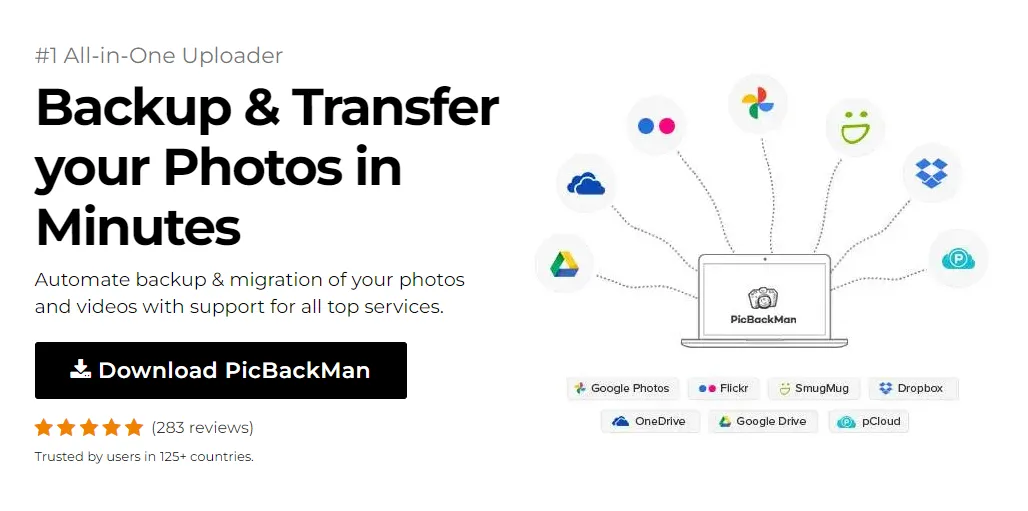
How to Transfer Photos from iPhone to Mac?


In this digital age, our smartphones have become our go-to devices for capturing life's precious moments. If you're an iPhone user with a Mac computer, you might find yourself wondering about the best ways to transfer those cherished photos from your mobile device to your desktop or laptop. Fear not! This comprehensive guide will walk you through various methods to seamlessly move your photos from iPhone to Mac, ensuring your memories are safely stored and easily accessible.
Transferring photos from your iPhone to your Mac is a crucial task for many users. Whether you're looking to free up space on your device, create backups, or simply organize your photo library, there are several methods at your disposal. In this section, we'll explore the most efficient and user-friendly ways to accomplish this task.
Using a USB Cable
One of the most straightforward methods to transfer photos from iPhone to Mac is by using a USB cable. This tried-and-true approach offers a quick and reliable way to move your images.
- Connect your iPhone to your Mac using a USB cable.
- If prompted, unlock your iPhone and tap "Trust This Computer" on your device.
- On your Mac, open the Photos app if it doesn't launch automatically.
- Your iPhone should appear in the sidebar of the Photos app under "Devices."
- Select the photos you want to import, or click "Import All New Items" to transfer everything.
- Once the import is complete, you can choose to delete the photos from your iPhone or keep them.
This method is particularly useful when you have a large number of photos to transfer or if you're dealing with limited internet connectivity.
Using AirDrop
For a wireless solution, AirDrop is an excellent option to transfer photos from iPhone to Mac. This feature uses Bluetooth and Wi-Fi to create a direct connection between your devices.
- Ensure both your iPhone and Mac have Wi-Fi and Bluetooth turned on.
- On your iPhone, open the Photos app and select the images you want to transfer.
- Tap the share button (the square with an arrow pointing upward).
- In the AirDrop section, you should see your Mac. Tap on it to initiate the transfer.
- On your Mac, you'll receive a notification. Click "Accept" to receive the photos.
- The transferred photos will be saved in your Downloads folder by default.
AirDrop is perfect for quick transfers of a few photos without the need for cables or internet connection.
iCloud Photos
iCloud Photos offers a seamless way to keep your photo library synchronized across all your Apple devices, including your iPhone and Mac.
- On your iPhone, go to Settings > [Your Name] > iCloud > Photos.
- Toggle on "iCloud Photos."
- On your Mac, open the Photos app.
- Go to Photos > Preferences > iCloud.
- Check the box next to "iCloud Photos."
Once set up, any photo you take on your iPhone will automatically appear in the Photos app on your Mac, as long as both devices are connected to the internet. This method is ideal for those who want constant synchronization without manual transfers.
Image Capture App
The Image Capture app on your Mac is another useful tool for transferring photos from your iPhone.
- Connect your iPhone to your Mac using a USB cable.
- Open the Image Capture app on your Mac.
- Select your iPhone from the list of devices.
- Choose where you want to save the imported photos on your Mac.
- Select the photos you want to transfer or click "Import All" to transfer everything.
- Click "Import" to begin the transfer process.
Image Capture gives you more control over where your photos are saved on your Mac, making it a good choice for those who prefer a specific folder structure.
Third-Party Apps
There are numerous third-party applications available that can help you transfer photos from iPhone to Mac. Some popular options include:
- PhotoSync: Offers wireless transfer and automatic background sync.
- Google Photos: Provides cloud storage and syncing across devices.
- Dropbox: Allows for automatic photo uploads and easy sharing.
These apps often come with additional features like automatic backups, cross-platform compatibility, and advanced organization tools.
Preparing Your Devices for Photo Transfer
Before you begin transferring photos from your iPhone to your Mac, it's essential to ensure both devices are properly prepared. This preparation will help streamline the process and prevent potential issues.
Updating iOS and macOS
Keeping your devices up-to-date is crucial for compatibility and security. Here's how to check for updates:
On your iPhone:
- Go to Settings > General > Software Update
- If an update is available, follow the prompts to install it
On your Mac:
- Click the Apple menu > System Preferences > Software Update
- If an update is available, click "Update Now"
Ensuring both devices are running the latest software versions can prevent compatibility issues during the transfer process.
Checking Available Storage
Before transferring photos, it's wise to check the available storage on your Mac. Large photo libraries can quickly fill up your hard drive.
- On your Mac, click the Apple menu > About This Mac > Storage
- Review the available space on your hard drive
- If necessary, use the "Manage" button to free up space by removing unnecessary files
Having sufficient storage space on your Mac will ensure a smooth transfer process and prevent interruptions due to lack of space.
Organizing Your Photos Before Transfer
Taking the time to organize your photos on your iPhone before transferring them to your Mac can save you a lot of time and effort in the long run.
Using Albums on iPhone
Creating albums on your iPhone is a great way to categorize your photos:
- Open the Photos app on your iPhone
- Tap the "Albums" tab at the bottom
- Tap the "+" icon in the top left corner
- Choose "New Album" and give it a name
- Select the photos you want to add to the album
By organizing your photos into albums, you can more easily select specific groups of photos to transfer to your Mac.
Deleting Unwanted Photos
Removing unnecessary photos from your iPhone before transfer can save time and storage space:
- Open the Photos app on your iPhone
- Tap "Select" in the top right corner
- Choose the photos you want to delete
- Tap the trash can icon to remove them
Remember to empty the "Recently Deleted" album to permanently remove these photos and free up space.
Advanced Transfer Techniques
For those looking to take their photo transfer game to the next level, there are some advanced techniques you can employ.
Using Terminal Commands
For the tech-savvy users, Terminal commands can offer a powerful way to transfer photos:
- Connect your iPhone to your Mac via USB
- Open Terminal on your Mac
- Use the following command to copy photos to a specific folder:
(Replace [Your iPhone Name] with your device's name)rsync -avh /Volumes/[Your iPhone Name]/DCIM/100APPLE/ ~/Desktop/iPhone_Photos/
This method allows for more control and can be useful for automating transfers through scripts.
Automating Transfers with Shortcuts
Apple's Shortcuts app can be used to create automated workflows for transferring photos:
- Open the Shortcuts app on your iPhone
- Create a new shortcut
- Add actions like "Find Photos" and "Save to Photo Album"
- Set up triggers like time or location to automatically run the shortcut
With a well-crafted shortcut, you can automate the process of organizing and preparing your photos for transfer to your Mac.
Troubleshooting Common Issues
Even with the best preparation, you might encounter some issues when transferring photos from iPhone to Mac. Here are some common problems and their solutions:
iPhone Not Recognized by Mac
If your Mac doesn't recognize your iPhone:
- Try a different USB port or cable
- Restart both your iPhone and Mac
- Ensure your iPhone is unlocked and on the Home screen
- Update both iOS and macOS to the latest versions
Photos Not Appearing in Transfer
If some photos aren't showing up for transfer:
- Check if the photos are stored in iCloud and not on your device
- Ensure you have sufficient storage space on your Mac
- Try using a different transfer method (e.g., AirDrop instead of USB)
Slow Transfer Speeds
For sluggish transfer rates:
- Use a USB 3.0 port if available
- Close unnecessary apps on both devices
- Consider using a wired connection instead of wireless methods for large transfers
Managing Your Photos After Transfer
Once you've successfully transferred your photos from iPhone to Mac, it's important to manage them effectively to keep your library organized and easily accessible.
Organizing in the Photos App
The Photos app on Mac offers powerful organization tools:
- Use the "Moments," "Collections," and "Years" views for automatic organization
- Create albums for specific events or themes
- Use the "People" feature to group photos by individuals
- Add keywords and descriptions to make photos searchable
Backing Up Your Photo Library
To ensure the safety of your transferred photos:
- Use Time Machine to back up your entire Mac, including your photo library
- Consider using cloud storage services for an off-site backup
- Periodically export your library to an external hard drive
Regular backups will protect your precious memories from loss due to hardware failure or other unforeseen circumstances.
Enhancing Your Photo Management Workflow
To make the most of your photo collection, consider these tips for an enhanced workflow:
Using Smart Albums
Smart Albums in the Photos app can automatically organize your photos based on criteria you set:
- In the Photos app, go to File > New Smart Album
- Set rules like date, location, or camera model
- Photos that match these criteria will automatically be added to the Smart Album
This feature can help you quickly find specific types of photos without manual organization.
Leveraging iCloud Shared Albums
iCloud Shared Albums allow you to share photos with friends and family:
- In the Photos app, select the photos you want to share
- Click the share button and choose "iCloud Photos"
- Create a new shared album or add to an existing one
- Invite people to view and contribute to the album
This feature is great for collaborating on photo collections or sharing memories with loved ones.
Quick Tip to ensure your videos never go missing
Videos are precious memories and all of us never want to ever lose them to hard disk crashes or missing drives. PicBackMan is the easiest and simplest way to keep your videos safely backed up in one or more online accounts. Simply Download PicBackMan (it's free!), register your account, connect to your online store and tell PicBackMan where your videos are - PicBackMan does the rest, automatically. It bulk uploads all videos and keeps looking for new ones and uploads those too. You don't have to ever touch it.
FAQs
What is the easiest way to transfer photos from iPhone to Mac?
The easiest way to transfer photos from iPhone to Mac is typically using AirDrop. It's wireless, fast, and doesn't require any cables or additional setup. Simply enable AirDrop on both devices, select the photos on your iPhone, tap the share button, and choose your Mac as the recipient. For larger transfers or if you prefer a wired connection, using a USB cable and the Photos app on your Mac is also straightforward and reliable.
How do I AirDrop multiple photos from iPhone to Mac?
To AirDrop multiple photos from iPhone to Mac:
1) Open the Photos app on your iPhone.
2) Tap "Select" and
choose the
photos you want to transfer.
3) Tap the share button (square with an upward arrow).
4) In the AirDrop section,
select
your Mac.
5) On your Mac, click "Accept" when prompted. The photos will be saved to your Downloads folder by
default.
How do I upload photos from my iPhone to my computer?
To upload photos from your iPhone to your computer (Mac or PC):
1) Connect your iPhone to your computer using a
USB
cable.
2) On a Mac, open the Photos app. On a PC, your iPhone should appear as a device in File Explorer.
3)
Select
the photos you want to import.
4) Click "Import Selected" or drag and drop the photos to your desired folder.
Alternatively, you can use cloud services like iCloud Photos or Google Photos to sync your photos across devices.
How to transfer files from iPhone to Mac?
To transfer files from iPhone to Mac:
1) Use AirDrop for quick wireless transfers.
2) Connect your iPhone via
USB and
use the Finder (macOS Catalina and later) or iTunes (earlier versions) to access and transfer files.
3) Use cloud
services like iCloud Drive or Dropbox to sync files between devices.
4) Email files to yourself.
5) Use
third-party
file transfer apps available on the App Store. The best method depends on the type and size of files you're
transferring.
How to transfer files from phone to MacBook?
To transfer files from phone to MacBook:
1) For iPhones, use AirDrop, iCloud, or a USB cable connection.
2)
For
Android phones, use Android File Transfer app on your Mac, then connect your phone via USB.
3) Use cloud services
like
Google Drive or Dropbox that work across platforms.
4) Email files to yourself.
5) Use third-party file
transfer apps
compatible with both your phone and MacBook. Choose the method that best suits your needs based on file size and type.
How to AirDrop from iPhone to Mac?
To AirDrop from iPhone to Mac:
1) Ensure both devices have Wi-Fi and Bluetooth turned on.
2) On your iPhone,
open the
content you want to share.
3) Tap the share button.
4) In the AirDrop section, you should see your Mac (make
sure it's
set to receive AirDrop from everyone or contacts).
5) Tap your Mac's icon.
6) On your Mac, click "Accept" when
prompted. The file will be saved to your Downloads folder. Remember, both devices need to be signed in to iCloud with
the same Apple ID for this to work seamlessly.
Conclusion
Transferring photos from iPhone to Mac doesn't have to be a daunting task. With the various methods outlined in this guide, you can choose the one that best fits your needs and technical comfort level. Whether you prefer the simplicity of a USB cable, the convenience of wireless transfers, or the seamless integration of iCloud, there's a solution for everyone.
Remember to regularly back up your photos once they're on your Mac to ensure the safety of your precious memories. By following these steps and tips, you'll be able to easily manage your growing photo collection across your Apple devices.
As technology continues to evolve, stay informed about new features and methods that might make photo transfer even easier in the future. Happy transferring, and may your photo library always be organized, accessible, and secure!
Backup & Transfer your Photos in Minutes
Automate backup & migration of your photos & videos with support for all top services.
Trusted by users in 125+ countries.










